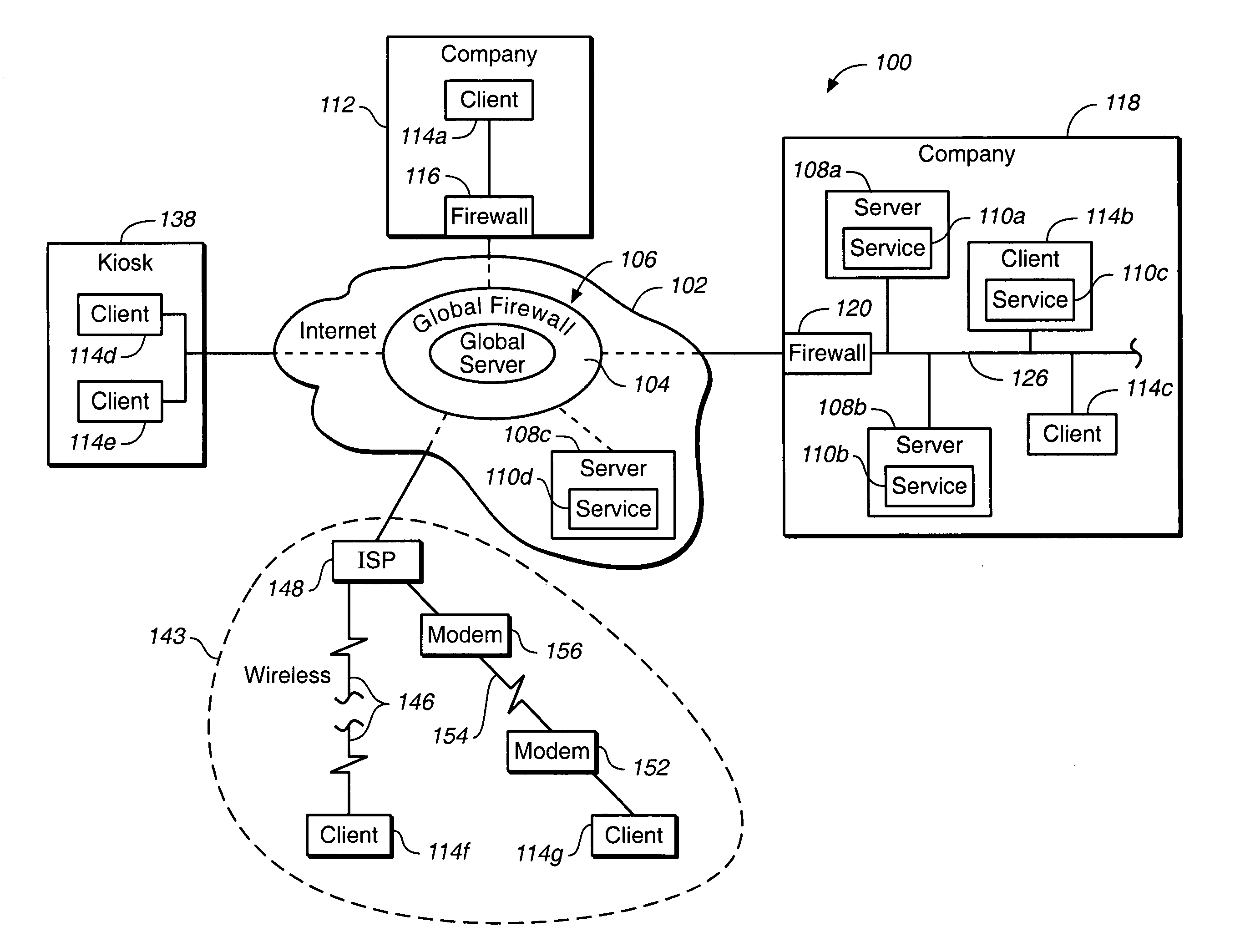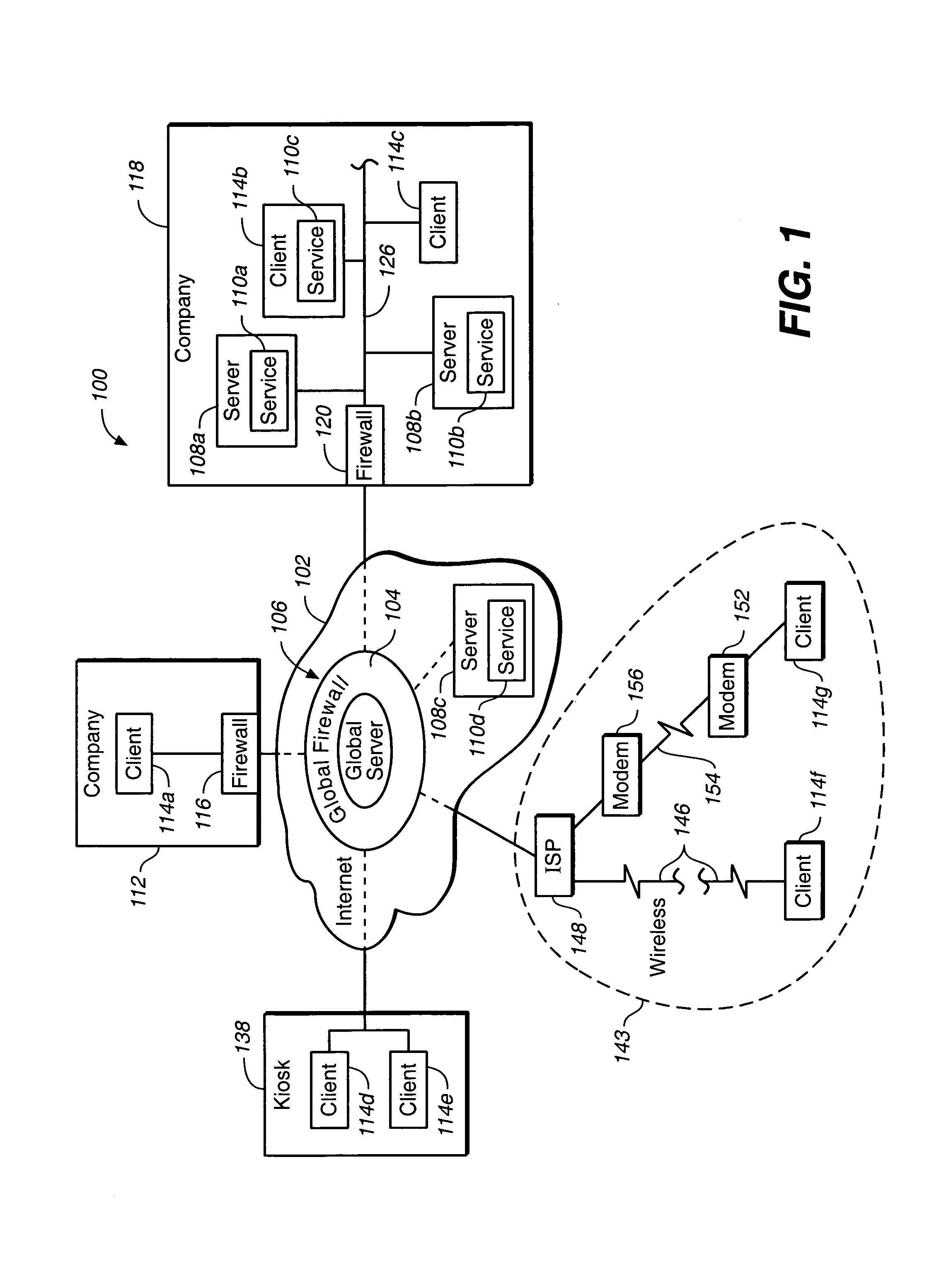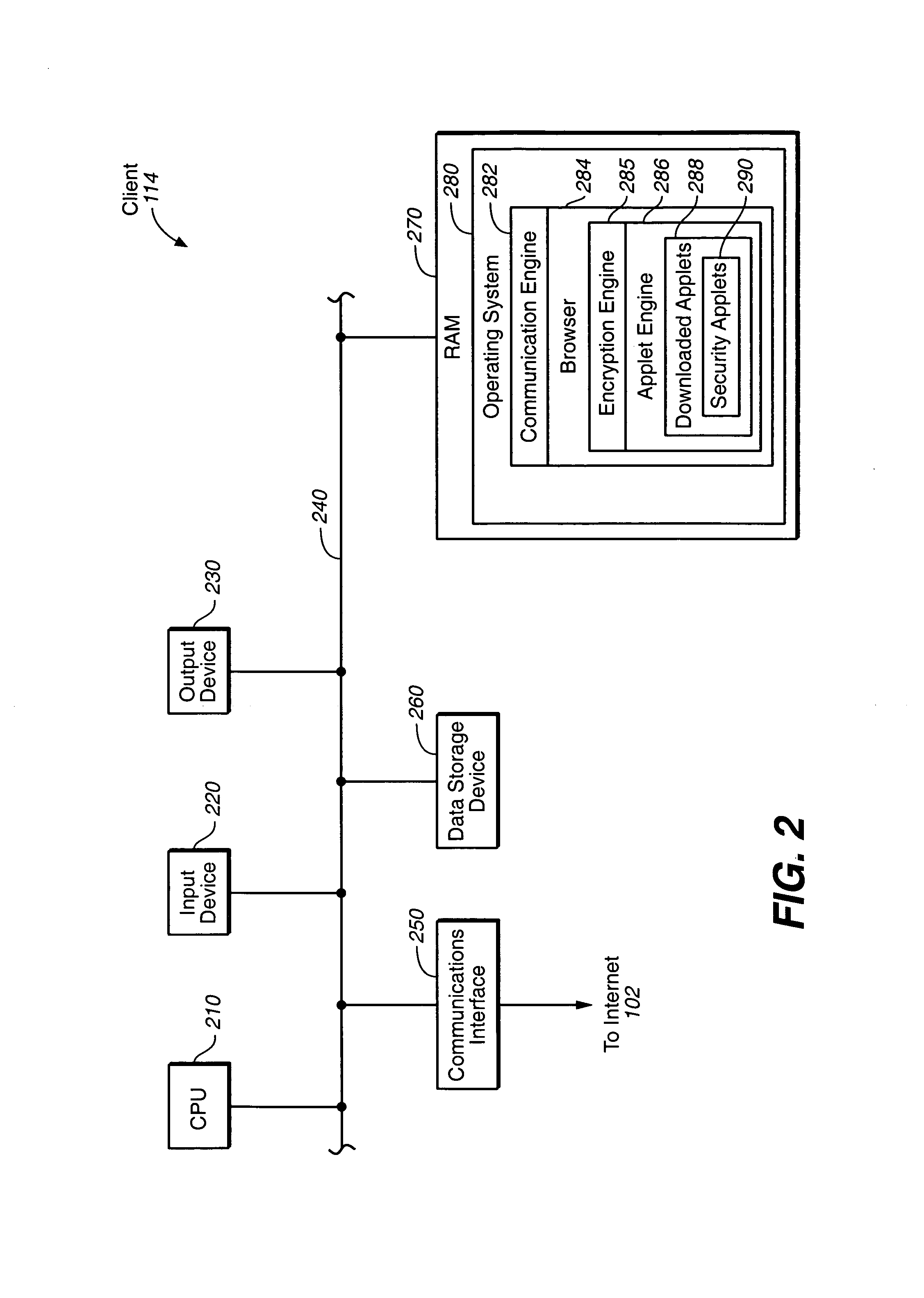System and method for enabling secure access to services in a computer network
a computer network and service technology, applied in the field of computer networks, can solve the problems of virtually everyone on the internet being vulnerable, providing little security, and becoming a target of data theft, data alteration and other mischief,
- Summary
- Abstract
- Description
- Claims
- Application Information
AI Technical Summary
Benefits of technology
Problems solved by technology
Method used
Image
Examples
first embodiment
[0055]FIG. 8A is a flowchart illustrating details of step 540 in a first embodiment, referred to as step 540a, wherein the global server 106 provides the client 114 with a direct connection to the service 110a–110d. Step 540a begins by the downloaded applet 288 in step 805 retrieving the service address 394 of the selected service 110a–110d from data storage device 360 and the authentication information for the service 110a–110d from the keysafe 395. The communications engine 282 in step 810 creates a direct and secure connection with the communications engine 482 of the service server 108 at the retrieved service address, and uses the authentication information to authenticate itself. The applet 288 in step 815 acts as the I / O interface with the service engine 490, which is described in detail in the cross-referenced patent application. Step 540a then ends.
second embodiment
[0056]FIG. 8B is a flowchart illustrating details of step 540 in a second embodiment, referred to as step 540b, wherein the global server 106 acts for the client 114 as a proxy to the service 110a–110d. Step 540b begins with the applet 288 in step 840 retrieving the “service” address, which results in directing it to the global server 106. Thus, the applet 288 in step 845 creates a connection with the global server 106. The servlet host engine 386 of the global server 106 in step 850 retrieves the service address of the selected service 110a–110d and the authentication information for the selected service 110a–110d from the keysafe 395. The secure communications engine 396 of the global server 106 in step 855 negotiates secure channel parameters for creating a secure channel with the secure communications engine 486 of the service server 108.
[0057]Thereafter, the applet 288 in step 860 acts as the I / O interface (enables the user to make requests of the service engine 490) with the s...
third embodiment
[0058]FIG. 8C is a flowchart illustrating details of step 540 in a third embodiment, referred to as step 540c, wherein the service 110a–110d being requested is located on the global server 106. Step 540c begins with the applet 288 in step 880 retrieving the service address for the service 110a–110d, which results in providing the applet 288 with the service address of the service 110a–110d on the global server 106. Thus, the applet 288 in step 882 creates a secure connection with the global server 106. No additional step of identification and authentication is needed since the client 114 has already identified and authenticated itself to the global server 106 in step 510 of FIG. 5.
[0059]In step 884, a determination is made whether the service 110a–110d is currently running. If so, then in step 886 a determination is made whether the service 110a–110d can handle multiple users. If not, then the global server 106 in step 890 creates an instance for the user, and the applet 288 in step...
PUM
 Login to View More
Login to View More Abstract
Description
Claims
Application Information
 Login to View More
Login to View More - R&D
- Intellectual Property
- Life Sciences
- Materials
- Tech Scout
- Unparalleled Data Quality
- Higher Quality Content
- 60% Fewer Hallucinations
Browse by: Latest US Patents, China's latest patents, Technical Efficacy Thesaurus, Application Domain, Technology Topic, Popular Technical Reports.
© 2025 PatSnap. All rights reserved.Legal|Privacy policy|Modern Slavery Act Transparency Statement|Sitemap|About US| Contact US: help@patsnap.com



